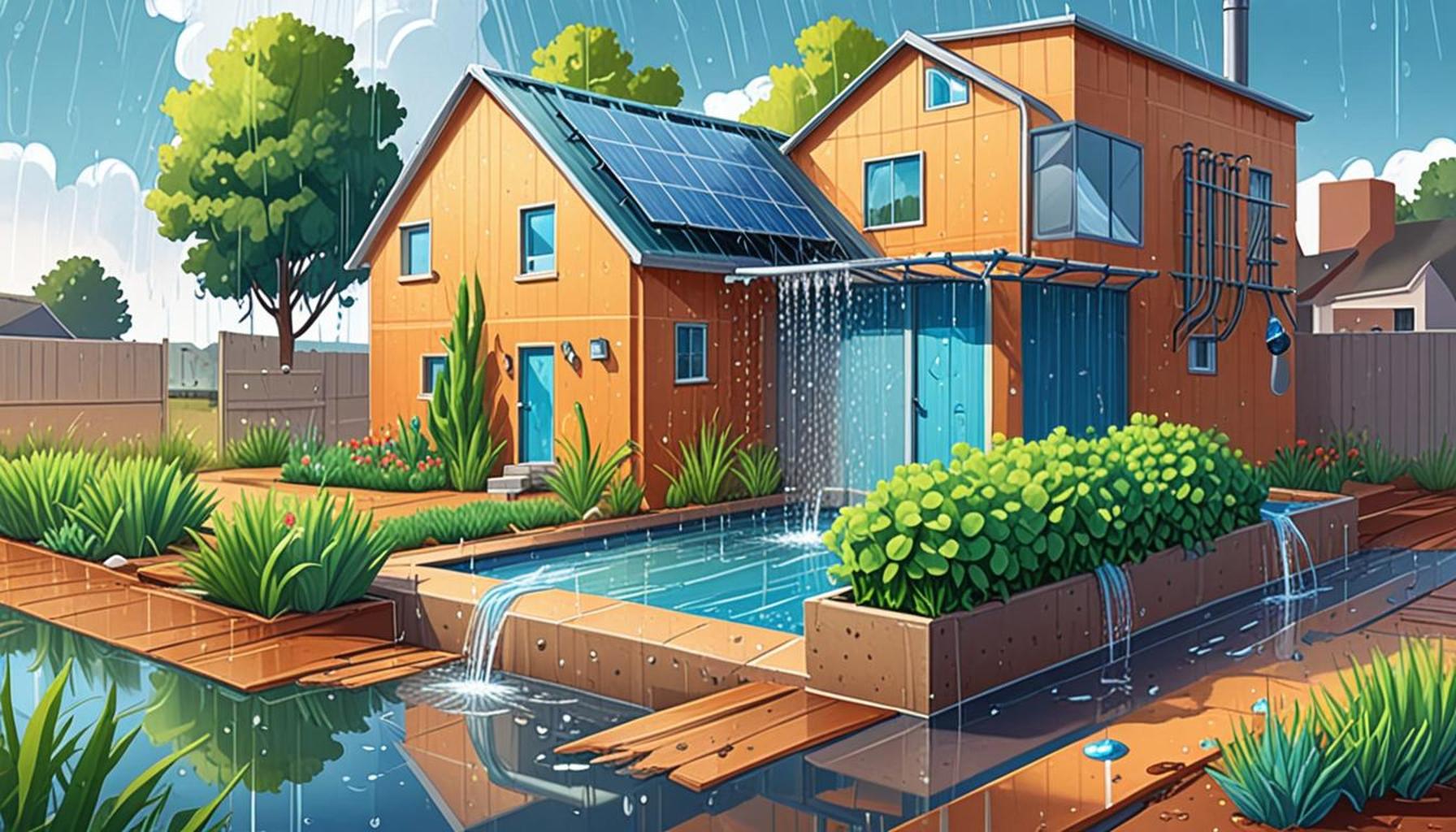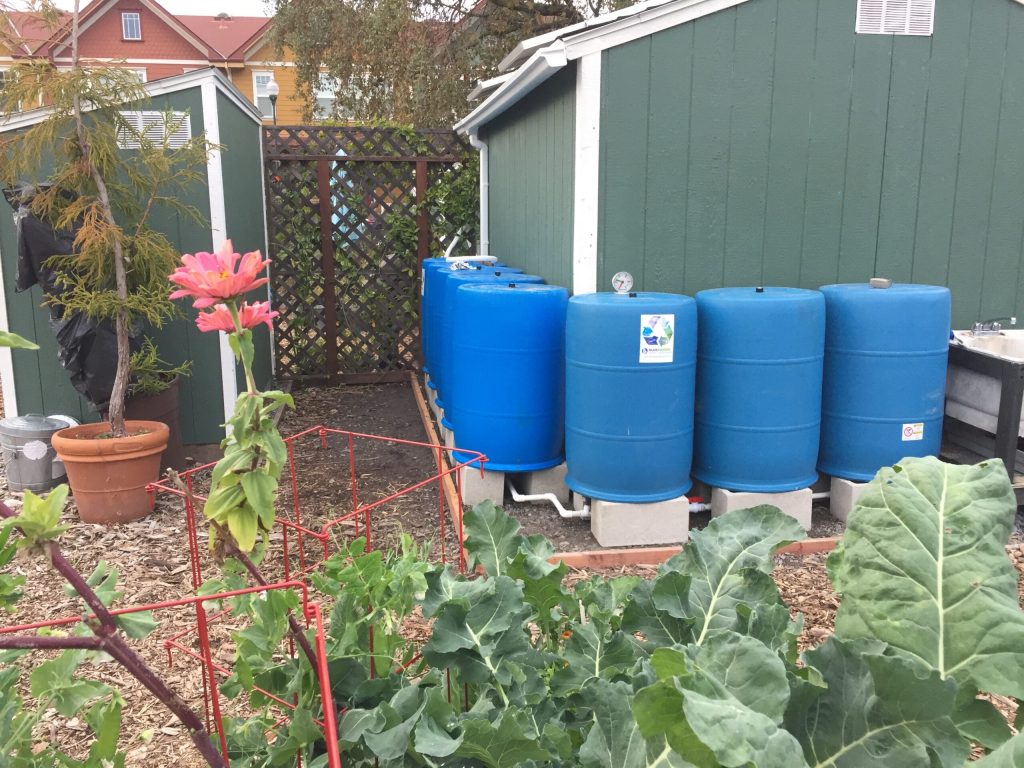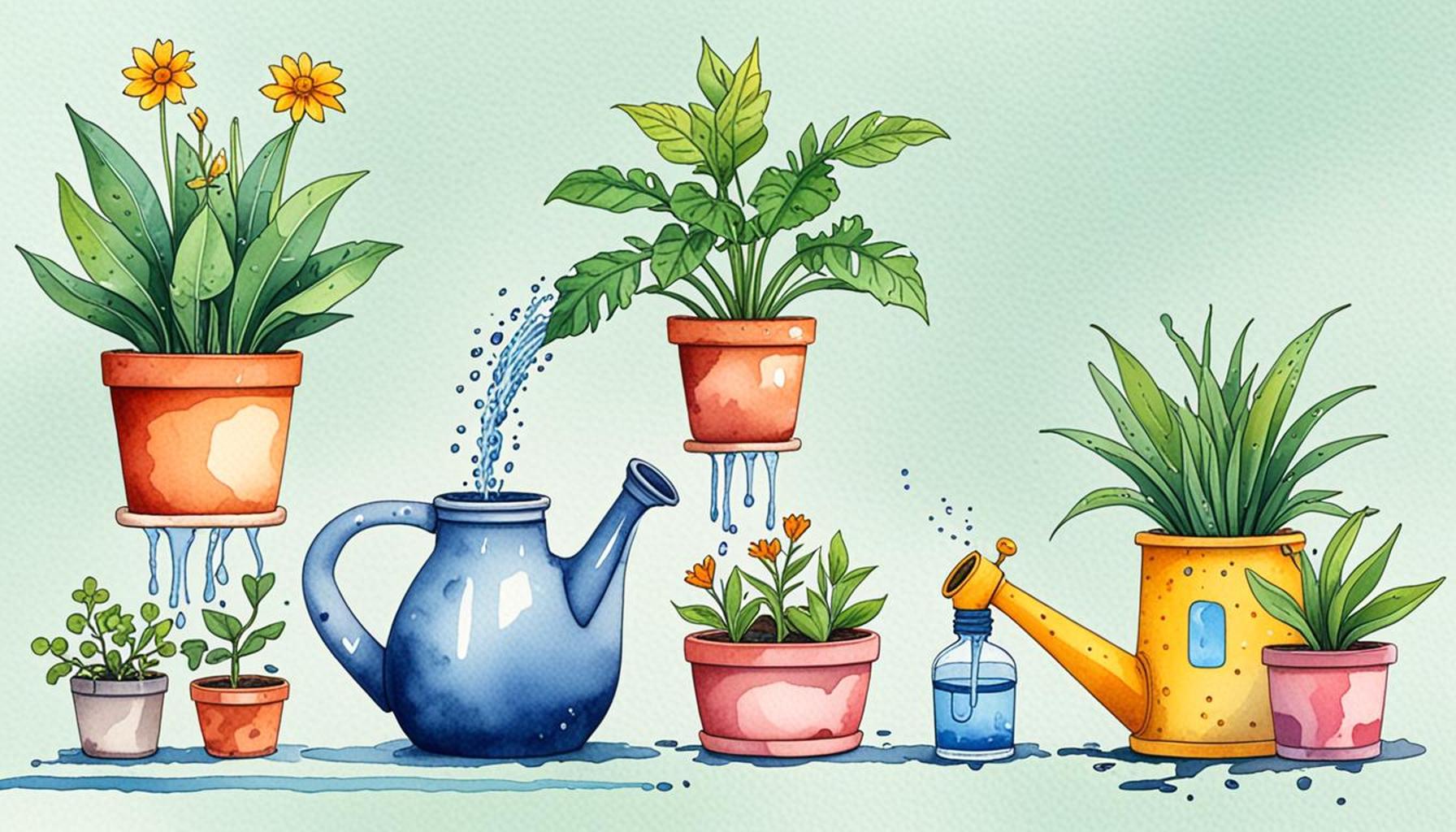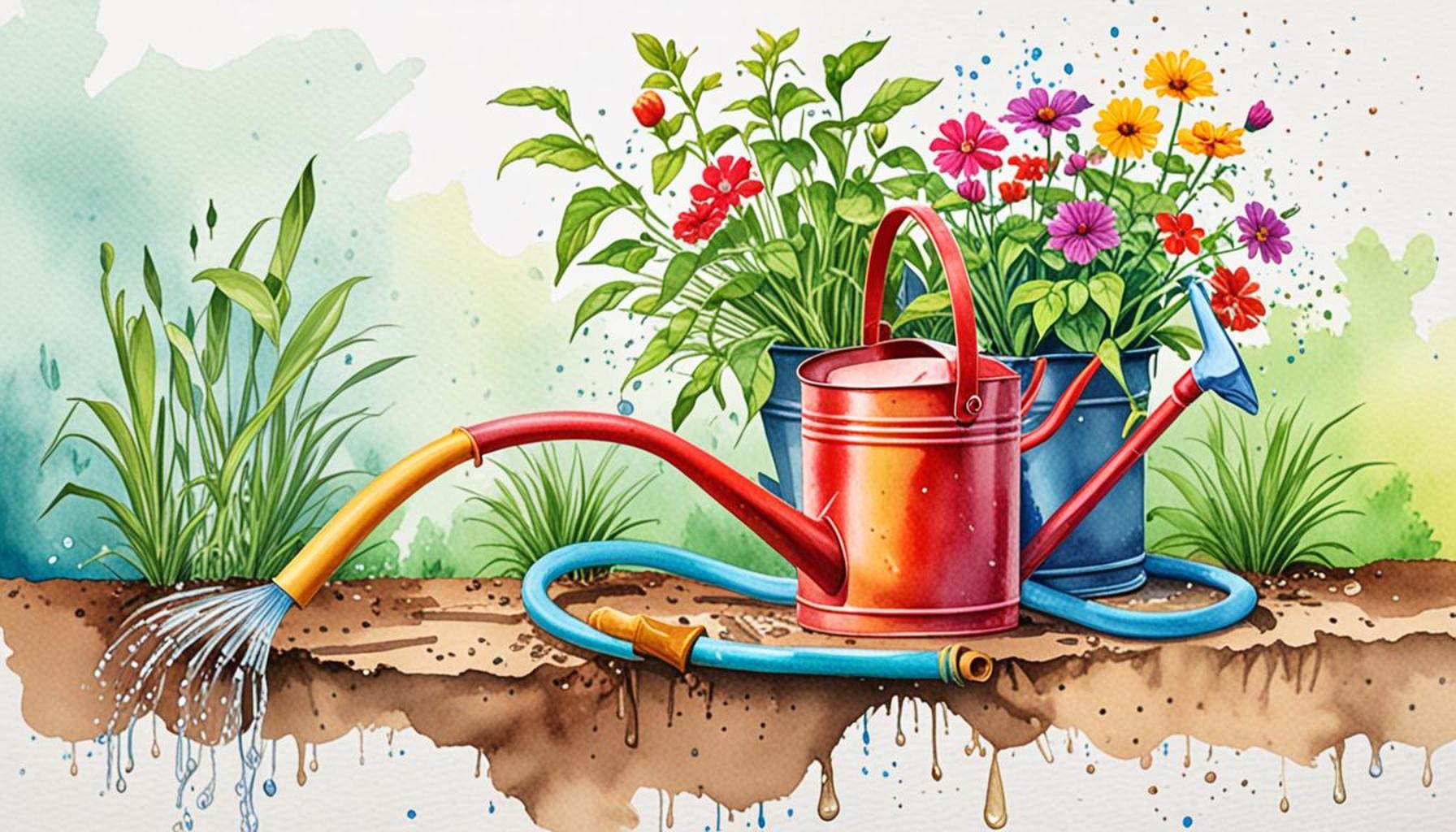Rainwater Harvesting System for Sustainable Irrigation

Water Scarcity: A Growing Concern
As water scarcity becomes an increasingly pressing concern in the United States, innovative solutions are needed to ensure sustainable agricultural practices. One of the most promising approaches is the rainwater harvesting system, which captures and stores rainwater for irrigation use. This method not only conserves precious water resources but also enhances farm productivity. The necessity for such systems is underscored by projections that indicate a significant increase in water demand in the coming decades, alongside altered precipitation patterns due to climate change.
Implementing a rainwater harvesting system offers a myriad of benefits that extend beyond mere cost savings:
- Reduced Water Costs: By decreasing reliance on municipal water supplies, farmers can significantly lower their operational expenses. For instance, urban farmers who collect rainwater can save as much as 50% on their annual water costs.
- Environmental Protection: These systems help minimize runoff and pollution entering local water bodies. By capturing rainwater, farms prevent contaminants and sediments, often washed into storm drains, from reaching rivers and lakes.
- Increased Crop Resilience: A direct benefit of these systems is the provision of a reliable water source during dry spells, which is crucial for crop sustainability. Crops like tomatoes and peppers, known for their high water needs, can particularly thrive under these conditions.
Examples of Rainwater Harvesting
Across various regions in the United States, farmers are increasingly adopting rainwater harvesting systems to combat the challenges posed by water scarcity. The versatility of these systems means they can be tailored to different needs:
- Barrel Systems: These are simple setups often used for small-scale gardens or backyard plots. Homeowners can easily install these systems by placing barrels under gutter downspouts to collect rainwater, making it accessible for watering plants and gardens.
- Cisterns: Larger storage tanks designed for bigger farms can hold thousands of gallons of collected rainwater. In areas like California, farmers utilize cisterns as a primary water source during prolonged dry seasons.
- Infiltration Trenches: These systems promote groundwater recharge by allowing rainwater to percolate into the soil. An excellent example can be found among sustainable vineyard operations in Oregon that use this method to enhance soil hydration and improve grape quality.
The Future of Agriculture
As climate conditions fluctuate, sustainable irrigation practices like rainwater harvesting can play a crucial role in safeguarding food security. The challenge is clear: even as water resources are taxed, technology and adaptive strategies can mitigate these pressures. By embracing these modern techniques, farmers not only secure their livelihoods but also take significant strides towards environmental stewardship. With a pressing need for innovation, rainwater harvesting stands at the forefront of sustainable agriculture, paving the way for a resilient future.
The potential of harnessing rainwater is vast, and further research into best practices and community adoption could unlock even greater advantages. As citizens become more aware of water issues, they may advocate for policies that support such sustainable initiatives, highlighting a growing movement towards conservation that resonates across the country.

EXPLORE MORE: Click here to learn about resilient plant species
Understanding Rainwater Harvesting Systems
The concept of rainwater harvesting systems is not new; however, its application in modern agriculture is rapidly evolving. These systems are specifically designed to collect and store rainwater, transforming what would otherwise be run-off or lost water into a valuable resource for irrigation. Farmers are increasingly turning to rainwater harvesting not only as a method for sustainable irrigation but also to enhance their resilience against the growing uncertainties of weather patterns.
Fundamentally, rainwater harvesting systems consist of several key components that work in concert to efficiently gather and store rainwater:
- Catchment Area: This is the surface from which rainwater is collected, often the roof of a building, but can also include bare soil or paved areas on a farm. The larger the catchment area, the more rainwater can be harvested.
- Conveyance System: This includes gutters, downspouts, and piping that transport collected rainwater to storage tanks or cisterns. Quality materials are essential to prevent leaks and contamination.
- Storage Tank: The heart of any rainwater harvesting system, these tanks can vary in size from small barrels for gardens to large underground cisterns on commercial farms. They should be constructed to minimize evaporation and contamination.
- Distribution System: Finally, the distribution system delivers the harvested water to crops. This can be anything from gravity-fed irrigation systems to advanced drip irrigation technology.
By implementing these systems, farmers can provide an alternative irrigation source, particularly during critical growth periods. For example, regions in the Southwest U.S. have embraced rainwater harvesting to address prolonged droughts. Farmers can capture monsoon rains, storing them for dry months. This proactive approach not only reduces dependence on drawn groundwater but also maintains soil moisture levels, enhancing crop health and yield.
Global Examples Influencing U.S. Practices
While rainwater harvesting is gaining traction in the States, several countries have pioneered innovative techniques that serve as models for American farmers:
- Australia: Facing severe droughts, Australian farmers have developed sophisticated rainwater harvesting systems that utilize both surface and underground waters. They employ a combination of rainwater catchment and extensive irrigation methods to offset their limited water supplies.
- Germany: Known for its sustainable practices, Germany has integrated rainwater harvesting into municipal planning. Rooftops of residential and commercial buildings are incorporated into a centralized system, with excess water used for irrigation and other non-potable uses.
- India: In rural areas, traditional rainwater harvesting techniques have been revived with modern technology. Small-scale farmers utilize simple yet effective methods to create recharge wells and rooftop systems that greatly enhance agricultural productivity.
Learning from these examples, U.S. policymakers and farmers can adopt and modify practices that fit the unique climatic and geographical contexts of American agriculture. The implementation of rainwater harvesting systems reflects an urgent need for innovation in sustainable irrigation, ensuring optimal water use amidst an ever-changing climate.
| Advantages | Description |
|---|---|
| Water Conservation | Rainwater harvesting significantly reduces dependency on municipal water supply. |
| Cost Savings | Using rainwater for irrigation lowers water bills and ensures sustainability in farming. |
| Soil Health Improvement | Natural rainwater helps to maintain soil structure and increases fertility with minimal chemical runoff. |
| Flood Mitigation | Harvested rainwater reduces surface runoff, which can help prevent localized flooding during heavy rains. |
Rainwater harvesting systems provide an efficient and eco-friendly solution for sustainable irrigation practices. They not only conserve precious resources but also contribute to a healthier ecosystem by improving soil conditions. Explore further how adopting such systems can lead to economic benefits and increased environmental resilience. Consider how municipalities and agricultural sectors are increasingly turning to these systems to mitigate challenges posed by unpredictability in weather patterns, ensuring a sustainable future for all.
DISCOVER MORE: Click here to learn about adapting your techniques to the climate
Innovative Techniques and Emerging Technologies
As the urgency of water conservation escalates, innovative technologies within rainwater harvesting systems are becoming increasingly sophisticated. These advancements not only increase efficiency but also optimize the use of harvested rainwater, making sustainable irrigation more accessible. Here are some of the most promising techniques being adopted:
- Smart Sensors: Recent developments in smart agriculture have ushered in the use of sensors that monitor soil moisture levels. Coupled with automated rainwater harvesting systems, these sensors can dictate when and how much water to release from storage tanks. This precision irrigation reduces waste and ensures that crops receive the right amount of water, only when needed.
- Filtration Systems: To assure that the harvested rainwater is free from contaminants, modern filtration systems use advanced methods, such as sand or activated carbon filtering. This practice not only makes the water suitable for irrigation purposes but can also adapt these systems for potable uses, depending on local regulations.
- Green Roofs: Urban agriculture is increasingly adopting green roofs that not only provide insulation but also serve as an effective rainwater harvesting catchment. By collecting rainwater directly from building tops, city dwellers can employ this water for community gardens or green spaces, demonstrating that sustainable practices can thrive within urban environments.
- Rain Gardens: Creating rain gardens or bioswales allows for rainwater to be absorbed directly into the soil, enhancing groundwater recharge. These gardens are designed to capture runoff from impervious surfaces and can support local biodiversity while supplying essential moisture to plants.
Emphasizing the potential of these innovations, let’s consider some encouraging statistics: According to a recent report by the Environmental Protection Agency (EPA), urban rainwater harvesting systems can reduce stormwater runoff by as much as 60%, significantly lessening flooding risks. Furthermore, systems designed to capture and use even 30% of annual precipitation can mitigate the reliance on traditional water sources in arid regions.
Financial and Environmental Benefits
The implementation of rainwater harvesting systems brings not only sustainable irrigation practices but also compelling economic advantages. Installing these systems often results in lower utility bills for water usage. Farmers and homeowners alike can enjoy reduced costs over time as they decrease their dependency on municipal water sources or well water.
Additionally, rainwater harvesting systems can also provide an essential buffer against the costs incurred during droughts. For example, a recent study on California’s agricultural sector revealed that farms employing rainwater harvesting saw a 40% increase in crop yield during drought years compared to those reliant solely on traditional irrigation methods. The ability to store rainwater during wet seasons allows for resource availability during critical dry spells, proving to be a lifeline for many crops.
Moreover, these systems contribute significantly to environmental preservation. They promote groundwater recharge, alleviate flood risks by capturing excess stormwater, and reduce the potency of pollutants entering waterways through untreated runoff. This ecological balance fosters healthier ecosystems and safer water sources, proving that rainwater harvesting systems not only support agriculture but the environment at large.
As farmers in the U.S. explore and adapt these techniques, they are presented with a potent tool for both economic sustainability and environmental stewardship, paving the way for a resilient agricultural future.
DISCOVER MORE: Click here to learn about soil preparation
Conclusion
In an era where water scarcity is becoming increasingly prevalent, rainwater harvesting systems stand out as a beacon of hope for sustainable irrigation practices. By integrating innovative techniques such as smart sensors, advanced filtration systems, and urban greening initiatives, these systems are poised to revolutionize the way we manage water resources. The benefits are manifold, from significantly reducing utility costs and increasing crop yields during droughts to fostering ecological balance and enhancing local biodiversity.
The evidence supporting the impact of rainwater harvesting on both economic and environmental fronts is compelling. For instance, capturing just 30% of annual precipitation not only alleviates the burden on traditional water sources but also mitigates flooding risks by reducing stormwater runoff by up to 60%. As farmers and urban planners across the United States embrace these practices, they are not merely adopting a method of irrigation; they are contributing to a transformative movement towards resilience in the face of environmental changes.
As we navigate the challenges posed by climate change and population growth, exploring the potentials of rainwater harvesting systems becomes essential. This innovative approach encapsulates a promise of sustainable agriculture and a healthier ecosystem, inviting communities to leverage the natural water cycle in their favor. Now more than ever, it’s crucial for stakeholders—from policymakers to homeowners—to advocate for and invest in rainwater harvesting solutions that can lead us towards a more sustainable and secure future.


